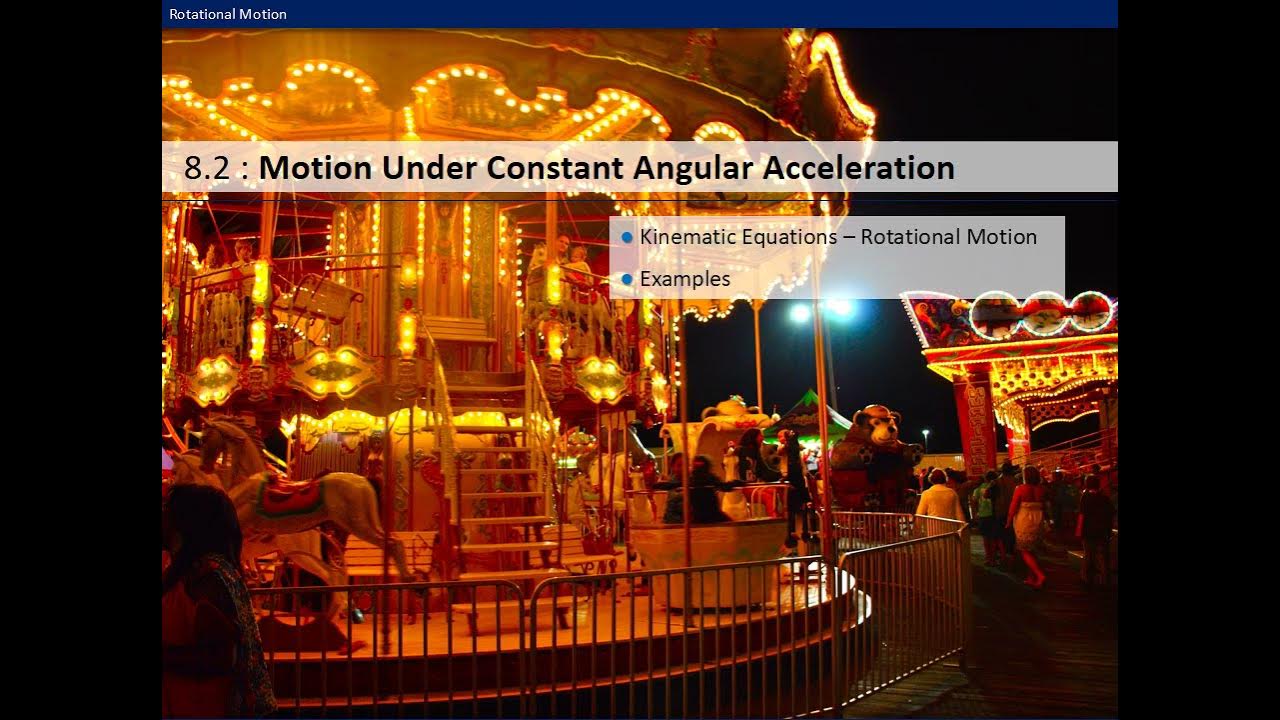QUAL FÓRMULA USAR??? - [CINEMÁTICA DO ZERO]
Summary
TLDRIn this video, the instructor explains how to solve kinematics problems, focusing on identifying the type of motion and selecting the right formula. The video covers both uniform motion (constant velocity) and uniformly accelerated motion (changing velocity), with clear examples for each. Using a scenario of a person jumping off a cliff, the instructor demonstrates how to calculate the time it takes to fall and how long it takes for sound to travel back up. By breaking down the steps, the video provides an easy-to-follow guide to solving such physics problems effectively.
Takeaways
- 😀 Understanding kinematics involves recognizing the type of motion: uniform motion (constant velocity) or uniformly accelerated motion (changing velocity).
- 😀 Uniform motion is described by the equation: s = s0 + v0 * t, where the velocity remains constant throughout.
- 😀 Uniformly accelerated motion involves a change in velocity, and the appropriate equations depend on the known and unknown variables in the problem.
- 😀 The equation of motion that doesn't involve time (Torricelli's equation) is useful when time is not given or required.
- 😀 When solving kinematic problems, identifying the given data (initial velocity, acceleration, displacement, etc.) and what is being asked for (e.g., time, final velocity) is essential for choosing the correct equation.
- 😀 In uniformly accelerated motion, if you don't have time and need to find displacement or final velocity, Torricelli's equation (v² = v0² + 2a * (s - s0)) is often the right choice.
- 😀 The 'ice cream cone' equation (s = s0 + v0 * t + ½ * a * t²) is the primary formula for uniformly accelerated motion when time is a factor.
- 😀 For a practical example, when a person jumps off a cliff, their fall is an example of uniformly accelerated motion due to gravity, with acceleration being -10 m/s².
- 😀 The time it takes for the person to fall from the cliff can be calculated using the kinematic equation, resulting in 4 seconds for the person to hit the water.
- 😀 Sound travels with a constant velocity (340 m/s), so when solving for the time it takes for sound to travel upwards to the person’s friend, you use the uniform motion equation.
- 😀 The sound’s travel time was calculated as approximately 0.235 seconds, showing the use of uniform motion equations in practical situations.
Please replace the link and try again.
Outlines

This section is available to paid users only. Please upgrade to access this part.
Upgrade NowMindmap

This section is available to paid users only. Please upgrade to access this part.
Upgrade NowKeywords

This section is available to paid users only. Please upgrade to access this part.
Upgrade NowHighlights

This section is available to paid users only. Please upgrade to access this part.
Upgrade NowTranscripts

This section is available to paid users only. Please upgrade to access this part.
Upgrade NowBrowse More Related Video

SOAL DAN PEMBAHASAN HUKUM NEWTON DAN GAYA NORMAL KELAS XI KURIKULUM MERDEKA

Productos Notables | Binomio Conjugado | Suma por diferencia | Ejemplo 2

8.2. Rotational Kinematics

Conceitos Iniciais de CINEMÁTICA - [Cinemática do Zero 01]

Introdução ao Teorema de Pitágoras | Geometria | Khan Academy

Rovnoměrně zrychlený pohyb - vzorce
5.0 / 5 (0 votes)